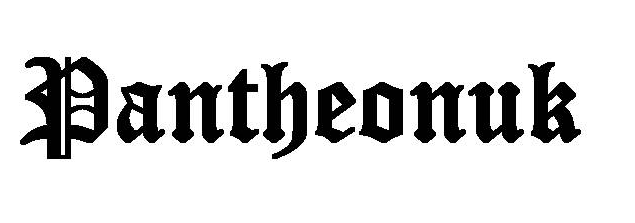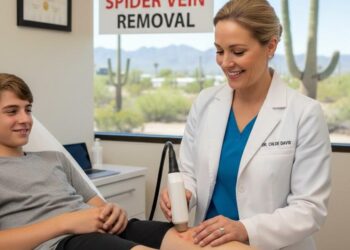Did you know that the prostate continues growing throughout life, with this growth dramatically accelerating after age 40? Benign prostatic hyperplasia (BPH) causes the prostate gland to enlarge and compress the urethra, creating a cascade of urinary problems that significantly increase UTI risk. The prostate surrounds the urethra like a donut, and as it grows, it squeezes this passage, making complete bladder emptying increasingly difficult.
Residual urine in the bladder becomes a breeding ground for bacteria. Normal bladder emptying flushes out bacteria naturally, but when urine remains after urination, bacterial colonization can occur. The warm, nutrient-rich environment of stagnant urine allows E. coli and other pathogens to multiply rapidly, overwhelming the body’s natural defenses. Men seeking BPH treatment in Singapore often report recurrent UTIs as their primary concern.
The Mechanism Behind Prostate-Related UTIs
The enlarged prostate disrupts normal urinary flow through multiple mechanisms:
– Direct compression narrows the urethral diameter, creating turbulent rather than laminar flow
– This turbulence prevents effective bacterial clearance and damages the protective mucous layer of the urethra
– The bladder muscle compensates by working harder, eventually becoming thickened and less elastic
– This bladder wall thickening, called trabeculation, creates pockets where bacteria can hide from the immune system
Chronic obstruction from BPH triggers detrusor muscle dysfunction. The detrusor contracts incompletely or inappropriately, leaving increasing amounts of post-void residual urine. Men with BPH retain varying amounts of urine after urination, with more severe cases retaining larger volumes. Each amount of retained urine increases infection risk.
The prostate itself becomes a reservoir for infection in advanced BPH:
– Prostatic ducts dilate and fill with stagnant secretions, creating biofilm-protected bacterial colonies
– These colonies periodically release bacteria into the urinary stream, causing recurrent UTIs despite antibiotic treatment
– The infected prostate secretions alter urine pH from its normal acidic state to alkaline, further promoting bacterial growth
Warning Signs of Prostate-Related UTI Risk
Incomplete bladder emptying manifests as specific symptoms before UTIs develop. Men describe starting urination normally but feeling the stream suddenly stop despite continued bladder fullness. This stop-start pattern, called intermittency, indicates the bladder struggling against prostatic obstruction. The sensation differs from normal urination ending – patients report feeling like “hitting a wall” mid-stream.
Post-void dribbling signals retained urine leaking past the obstruction. Unlike the few drops common in healthy men, prostate-related dribbling continues for minutes, often soaking underwear. This prolonged dribbling occurs because the bladder neck remains partially open, unable to close properly due to prostatic distortion of normal anatomy.
undefined
Medical Evaluation and Diagnosis
Urologists evaluate prostate-related UTI risk through systematic testing. Digital rectal examination assesses prostate size, consistency, and tenderness. A normal prostate feels firm like the tip of your nose, while BPH creates a rubbery enlargement. The exam takes 30 seconds but provides important information about prostate geometry and potential infection.
Post-void residual measurement using bladder scanning quantifies retention. The ultrasound probe placed on the lower abdomen calculates remaining volume within seconds. This non-invasive test guides treatment decisions for BPH treatment.
⚠️ **Important Note**
Blood in urine (hematuria) with prostate symptoms requires evaluation. While BPH can cause bleeding, bladder cancer presents similarly and must be excluded through cystoscopy.
Uroflowmetry measures urination dynamics objectively. Patients urinate into a special toilet that graphs flow rate over time. The flow pattern – continuous versus intermittent – reveals obstruction severity. Combined with residual measurement, uroflowmetry predicts UTI risk.
Urine culture remains the standard for UTI diagnosis. Unlike dipstick tests that only suggest infection, culture identifies specific bacteria and antibiotic sensitivities. Men with prostate issues often harbor resistant organisms from previous antibiotic exposure. Culture results guide targeted therapy, preventing treatment failure and resistance development.
Treatment Approaches for BPH
Alpha-blockers like tamsulosin work within days to improve urinary flow. These medications relax smooth muscle in the prostate and bladder neck, widening the urethral opening. Most men experience improved flow and symptom reduction. Side effects include dizziness and retrograde ejaculation, but these rarely require discontinuation.
5-alpha reductase inhibitors (finasteride, dutasteride) shrink the prostate over months. By blocking DHT production, these drugs reduce prostate volume after several months of treatment. Combining alpha-blockers with 5-alpha reductase inhibitors may provide enhanced long-term outcomes. PSA levels drop significantly during treatment, requiring adjustment when screening for prostate cancer.
Minimally invasive procedures offer alternatives when medications are not effective. Prostatic urethral lift (UroLift) uses permanent implants to compress obstructing prostate tissue laterally, opening the urethra. The 15-minute procedure preserves sexual function while improving flow rates. Recovery takes days rather than weeks.
Transurethral resection of prostate (TURP) is an established treatment for severe BPH. Using an electric loop, surgeons remove obstructing tissue from inside the urethra. Current bipolar TURP reduces bleeding and allows same-day discharge for selected patients. Flow rates typically improve substantially post-TURP, with durable results lasting many years.
Prevention Strategies
Bladder training techniques help improve emptying despite prostatic obstruction. Double voiding involves urinating normally, waiting 30 seconds, then attempting again. This technique may expel additional urine, reducing residual volume. Positioning matters too – leaning forward or sitting rather than standing may improve emptying for some men.
Fluid management requires strategic timing rather than restriction. Drinking adequate fluids daily maintains dilute urine that resists bacterial growth. However, limiting fluids 2 hours before bedtime may reduce nocturia. Caffeine and alcohol can irritate the bladder and worsen urgency – switching to water or herbal tea may improve symptoms.
✅ Quick Tip
Cranberry extract supplements containing 36mg proanthocyanidins daily may reduce UTI recurrence by preventing bacterial adhesion to bladder walls, though evidence remains stronger for women than men.
Regular monitoring helps prevent progression. Prostate screening includes PSA testing and digital examination, typically recommended after age 50, or 45 with family history. Post-void residual checks for men on BPH medication can help detect treatment changes. Urine testing may identify asymptomatic bacteriuria before symptomatic UTIs develop. Healthcare professionals can provide guidance on appropriate monitoring schedules.
Conclusion
Untreated prostate enlargement leads to incomplete bladder emptying and bacterial colonization. Early treatment can restore normal urination patterns and prevent recurrent infections. Current therapies range from medications to minimally invasive procedures that preserve function while addressing obstruction.
If you’re experiencing intermittent urinary stream, incomplete bladder emptying, or recurrent UTIs, a MOH-accredited urologist can evaluate your prostate health and recommend appropriate treatment options.







